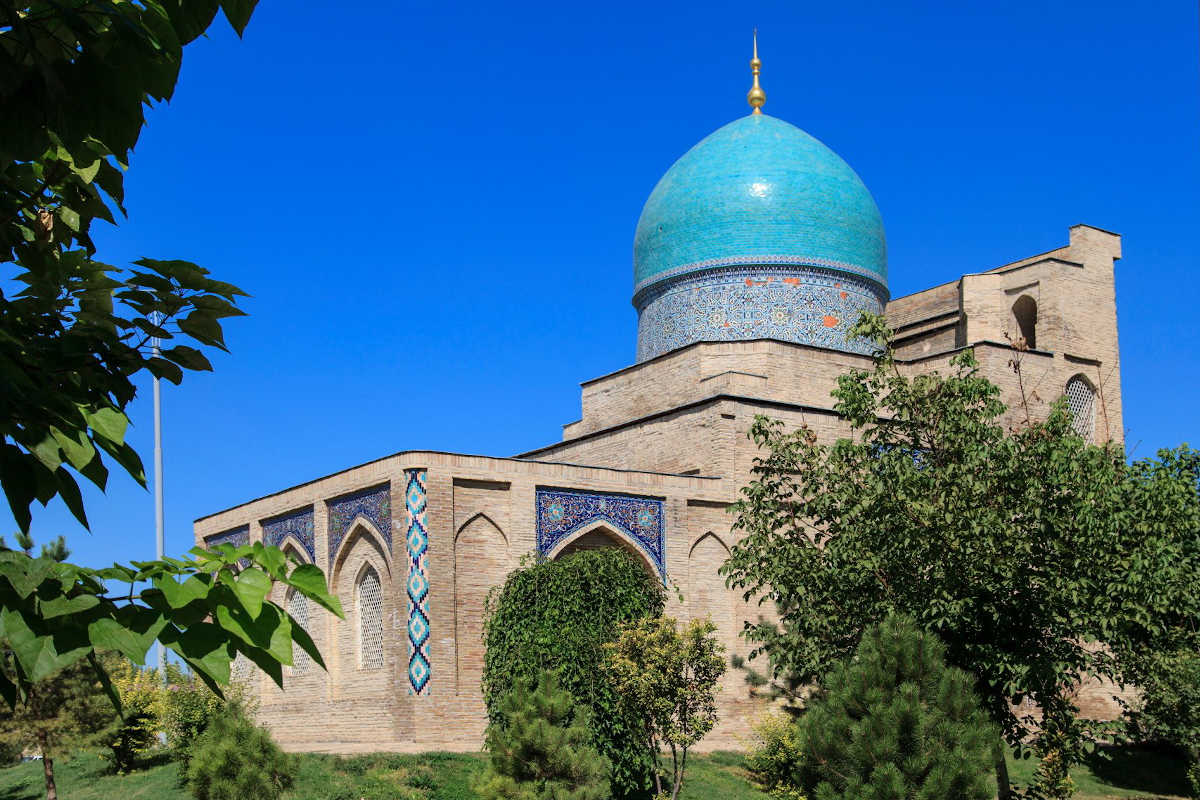Tashkent - Mausoleum Kaffal Shashi
The mausoleum of Abubakr Kaffal ash-Shashi (also Abu Bakr al-Kaffal al-Shashi) is one of the most important cultural and architectural monuments in Tashkent and the whole of Uzbekistan. It is part of the Hazrat Imam complex, located in the capital’s historic district.

Due to certain events, the Khazrat Imam ensemble was built near this mausoleum, around which more and more buildings were built, eventually becoming a full-fledged complex. The name of the complex is that of the philosopher and great scholar Abubakr Shashi, who was a worthy representative of his time. He was born in the capital in the sixteenth century, his father was a master locksmith. He received an excellent education in the madrasas of the various major cities. Because of his deep devotion to Islam, he made many pilgrimages to Mecca, visited great cities and talked to the best scholars of the time. He had such great knowledge in theology and such unquestionable authority that he was given the name of the Great Imam. Most of his contemporaries also believed that he had no equal in the whole of Mawaraunnahr. After receiving a large number of honorary titles and epithets, he was still a resident of Tashkent in the memory of his contemporaries, so he was nicknamed “the Tashkent locksmith”. Incidentally, there is a legend that he got the name “locksmith (Kaffal)” because he made a very beautiful lock whose key weighed more than 1 kilogram.
Like most enlightened people of his time, Abubakr Kaffal was not just a theologian. There is a hint that he was an excellent poet and philosopher. Only a small part of the works he produced have survived to our times. He spent a lot of time studying philosophical currents and spreading his own teachings, yet he devoted some of his works to poetry.
Abubakr ash-Shashi spent his entire life spreading Islam and enlightenment. Therefore, after his death, his burial place was considered sacred. The first mausoleum, built almost immediately after his death, has not survived to this day. Therefore, six centuries later, a new mausoleum was built, which has been preserved to this day.
If you look closely at the façade of the mausoleum, you can read the names of the architects who participated in its construction as well as the date of its completion.
The mausoleum was built in a style unusual for this type of building, the khanaka. Originally, khanakas were built as temporary shelters for wayfarers and pilgrims. This is their similarity to monasteries; however, the main difference between khanakas was that they were easy to enter and leave, which is not characteristic of monasteries.
The tomb of Abubakr Kaffal ash-Shashi became a pilgrimage site for a large number of Muslims from all over the world, so it was decided to build this mausoleum in Tashkent in this style. It is square and has an asymmetrical ground plan. It is also located on an elevated plot of land, which raises the building above the other houses. Although the Kaffal mausoleum is very massive, it looks surprisingly slender as it is crowned by a dome. Unlike almost all mausoleums, its entrance faces north (it is common to face Mecca). In addition to the large hall, the building has three floors of pilgrimage cells.
